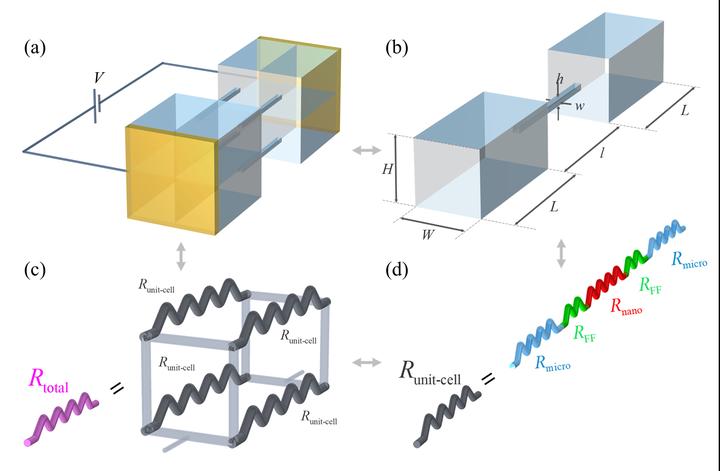 A multichannel nanofluidic array system is equivalent to a stack of ‘unit-cells’.
A multichannel nanofluidic array system is equivalent to a stack of ‘unit-cells’.
Nanofluidic systems exhibit transport characteristics that have made technological marvels such as desalination, energy harvesting, and highly sensitive biomolecule sensing possible by virtue of their ability to influence small currents due to the selective transport of ions. Traditionally many of these applications have relied on the use of nanoporous membranes. The immense complexities of membrane geometry often impede a comprehensive understanding of the underlying physics. To bypass the associated difficulties, here we consider the much simpler nanochannel array comprised of numerous nanochannels and elucidate the effects of interchannel interactions on the Ohmic response of the array. We demonstrate that a nanochannel array is equivalent to an array of mutually independent but identical unit-cells whereby the array can be represented by an equivalent electrical circuit of unit-cell resistances connected in a parallel configuration. We show that the total resistance of the system scales inversely to the number of channels. We further deconstruct the unit-cell to be a combination of multiple contributing resistances connected in series. We validate the theoretical model underlying these electrical abstractions using numerical simulations and experiments. Our approach to modeling realistic nanofluidic systems by their equivalent electrical circuit provides an invaluable tool for analyzing and interpreting experimental measurements, characterization of surface charge properties of newly developed materials, and a method for the design and development of function-specific nanofluidic devices.